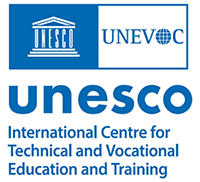
The UNESCO-UNEVOC International Centre: Who We Are | What We Do | Working With Us | Get in Touch
The UNEVOC Network: Learn About the Network | UNEVOC Network Directory
For Members: UNEVOC Centre Dashboard
Thematic Areas: Inclusion and Youth | Digital Transformation | Private Sector Engagement | SDGs and Greening TVET
Our Key Programmes & Projects: BILT: Bridging Innovation and Learning in TVET | Building TVET resilience | TVET Leadership Programme | WYSD: World Youth Skills Day
Past Activities: COVID-19 response | i-hubs project | TVET Global Forums | Virtual Conferences | YEM Knowledge Portal
Our Services & Resources: Publications | TVET Forum | TVET Country Profiles | TVETipedia Glossary | Innovative and Promising Practices | Toolkits for TVET Providers | Entrepreneurial Learning Guide
Events: Major TVET Events | UNEVOC Network News
A generic term for modes of education in which the student and the teacher are separated in time and space. It includes online education (with ? 80% of the content delivered online) and blended education (with 30-79% of the content delivered online), as well as modes of education using printed material delivered by post and/or other tools for bridging the distance.
 Source:
Source:Distance education describes a set of teaching and learning strategies (or educational methods) that can be used to overcome spatial and temporal separation between educators and students. These strategies or methods can be integrated into any educational programme and potentially used in combination with other teaching and learning strategies in the provision of education (including with strategies that demand that students and educators be together at the same time and/or place).
Distance Education is a process of teaching and learning characterised by the separation of teacher and learner in time and/or place for most of the educational transaction, mediated by technology for delivery of learning content but with possibility of face-to-face interaction for learner-teacher and learner-learner interaction, and provision of two-way didactic communication. Distance is about the transactional distance and not the physical distance. It is a conceptual construct with two key dimensions: structure and dialogue. Programmes with more structure and less dialogue are considered to have more distance.
A mode of education in which students enrolled in a course do not attend the institution, but study off-campus and may submit assignments by mail or email (also be referred to as: Distance study or Distance learning).